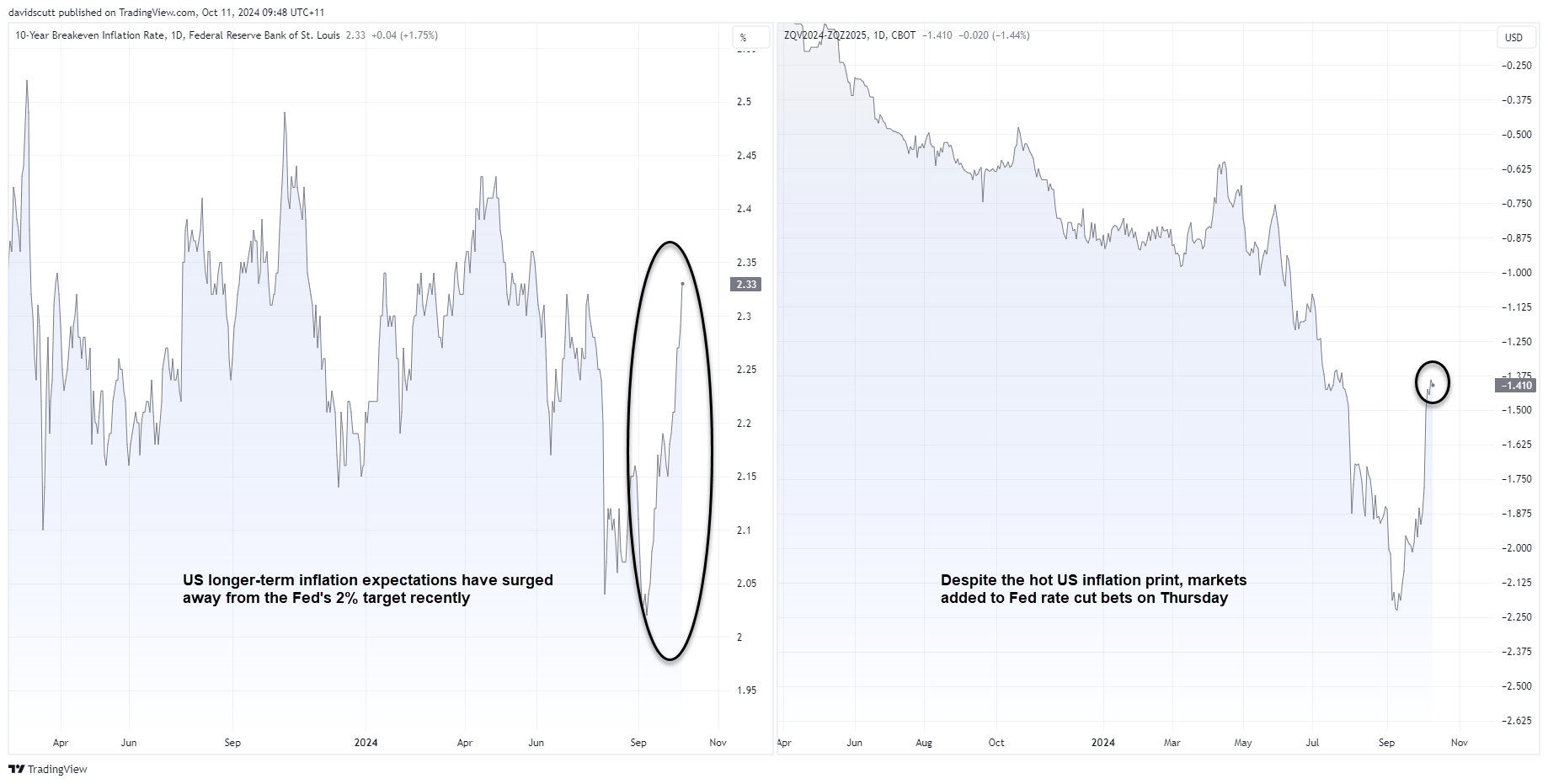
- US initial jobless claims surged last week, largely reflecting the impact of Hurricane Helene on US Gulf states
- Hurricane Milton may deliver a similar impact, creating the potential for an ugly October US nonfarm payrolls report
- With the Fed prioritising labour market data, weakness could lead to lower US yields and softer US dollar
- USD/JPY and gold remain influenced by movements in US interest rates
Overview
Surging initial jobless claims should put traders on alert for further temporary softness in US labour market data, especially with the reference week for the October non-farm payrolls report coinciding with a period of extreme weather around the Gulf of Mexico.
Even though disruptions caused by hurricane season should be factored in, with the Fed ramming home the message that the outlook for rates is likely to be determined by the jobs market, the prospect of weak data suggests we may see a pullback in US bond yields and the dollar next week.
If correct, it will have ramifications for USD/JPY and gold which have both been heavily influenced by movements in US Treasury yields recently, especially the front-end of the curve.
Jobless claims surge, overriding hot inflation
No one, literally, expected we’d see jobless claims in the United States surge to the highest level in a year last week, surpassing every forecast provided to Bloomberg. While an increase had been anticipated, the 258,000 figure was 20,000 more than consensus, helping to offset the impact of another uncomfortably elevated core US consumer price inflation figure for October.

Even with a 0.31% increase in core inflation that was broad in nature, not just shelter-driven, marking the second consecutive 0.3% increase in the series, market pricing for Fed rate cuts looking out to the end of 2025 increased a touch as traders focused on the claims data. Notably, as rate cut bets increased, longer-term market-based inflation expectations lifted to the highest level since June.

More dire data to deliver dollar downside?
As I’ve covered in previous notes, US interest rates have and continue to play a key role in influencing moves in USD/JPY and gold. With little top-tier US economic data out next week until Friday with the retail sales report, the prospect of a further increase in US bond yields does not screen as high.
Given the risk we see another ugly jobless claims print, and the subsequent spill over it may have on expectations for October non-farm payrolls as the reference week for the report has been impacted by Hurricane Milton, it would not surprise to see a partial reversal of the lift in US yields and dollar over the next week.
For USD/JPY, that points to downside risks. The opposite is true for gold.
USD/JPY reverses hard ahead of key resistance level

Looking at USD/JPY on the daily chart, you can see that after taking out the highs struck in August, the pair reversed hard as it approached a key resistance zone starting from 149.75, sending the price back to uptrend support that it now finds itself resting on.
While MACD and RSI (14) continue to provide bullish signals, one look at the rolling 20-day correlation with US two-year bond yields in the bottom pane in blue tells you that if short-dated yields were to decline, the bullish picture could quickly turn bearish.
I’m not going to pre-empt a downside break – I want to see the price break first, allowing for shorts to be established with a stop above the uptrend for protection. 147.20 looms as the obvious initial target, if we see a bearish break.
Alternatively, if the price can’t puncture the uptrend, you can flip the trade around, buying the bounce with a stop beneath the uptrend for protection. Targets include Thursdays high of 149.60 or 149.75.
Gold perks up as inflation heats up

Gold had a constructive session on Thursday, delivering a key reversal on the daily timeframe. While the price action has not yet been confirmed by momentum indicators, there’s signs RSI (14) may soon break its downtrend, pointing to a possible shift in directional risks.
If we were to see a pullback and bounce from $2625.80, a minor level that has acted as both support and resistance recently, a potential setup would be to buy with a stop below for protection.
On the topside, the price would have to overcome downtrend resistance currently located around $2639, potentially opening the door for a push back towards the record highs of $2685.67. If the price were unable to break the downtrend, my preference would be to nix the trade and look for better setups elsewhere.
-- Written by David Scutt
Follow David on Twitter @scutty





